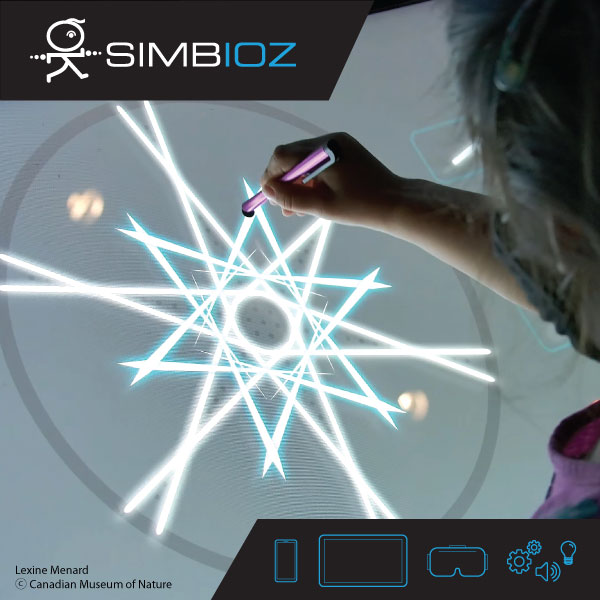Culture for All
A new museum is born in North Vancouver
Sandra Thomas
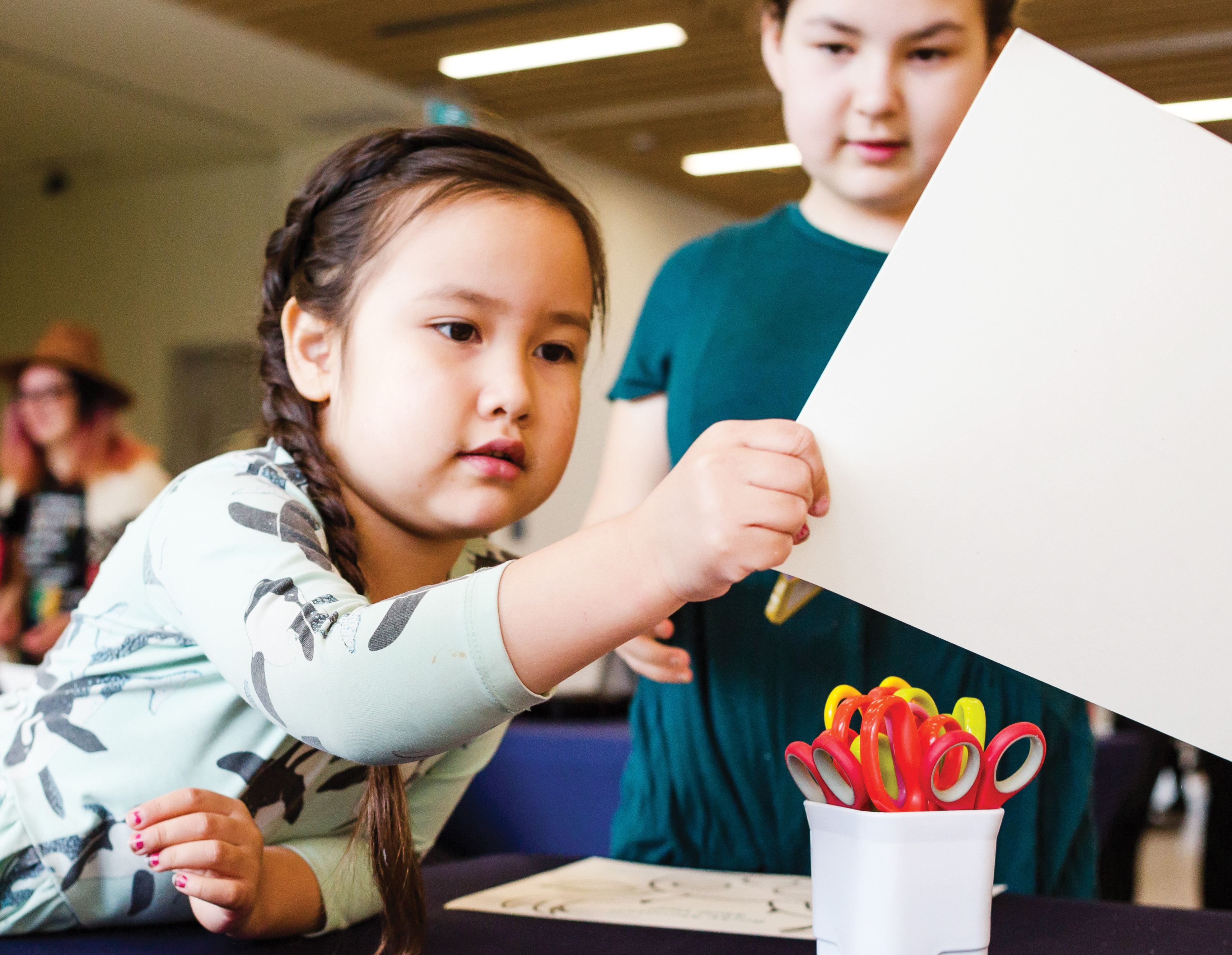
MONOVA: Museum of North Vancouver’s Campfire Capers is a preschool story-time program for children aged 2-5 focused on different themes. In each 30-minute program, children will learn about a topic, read a story, sing a song, look at a special museum object and do a fun activity. Photo — Maxine Bulloch
Opening a new museum is no small feat, especially in the middle of a global pandemic, and that is exactly what the staff and volunteers at MONOVA: Museum of North Vancouver accomplished last December.
Nestled into a reviving and thriving oceanside shopping area known as The Shipyards, the 16,000-square-foot space features a permanent gallery, rental venue — including a large patio, and a temporary gallery, scheduled to be completed by the end of 2022. Exhibit highlights include the restored Streetcar 153, a powerful new cedar carving of Sch’ich’iyuy (The Two Sisters) by Sḵwx̱wú7mesh (Squamish) carver Wade Baker, an Indigenous welcome circle showcasing Sḵwx̱wú7mesh and Səl̓ílwətaɬ (Tsleil-Waututh) First Nations artifacts, interactive children’s displays and more.
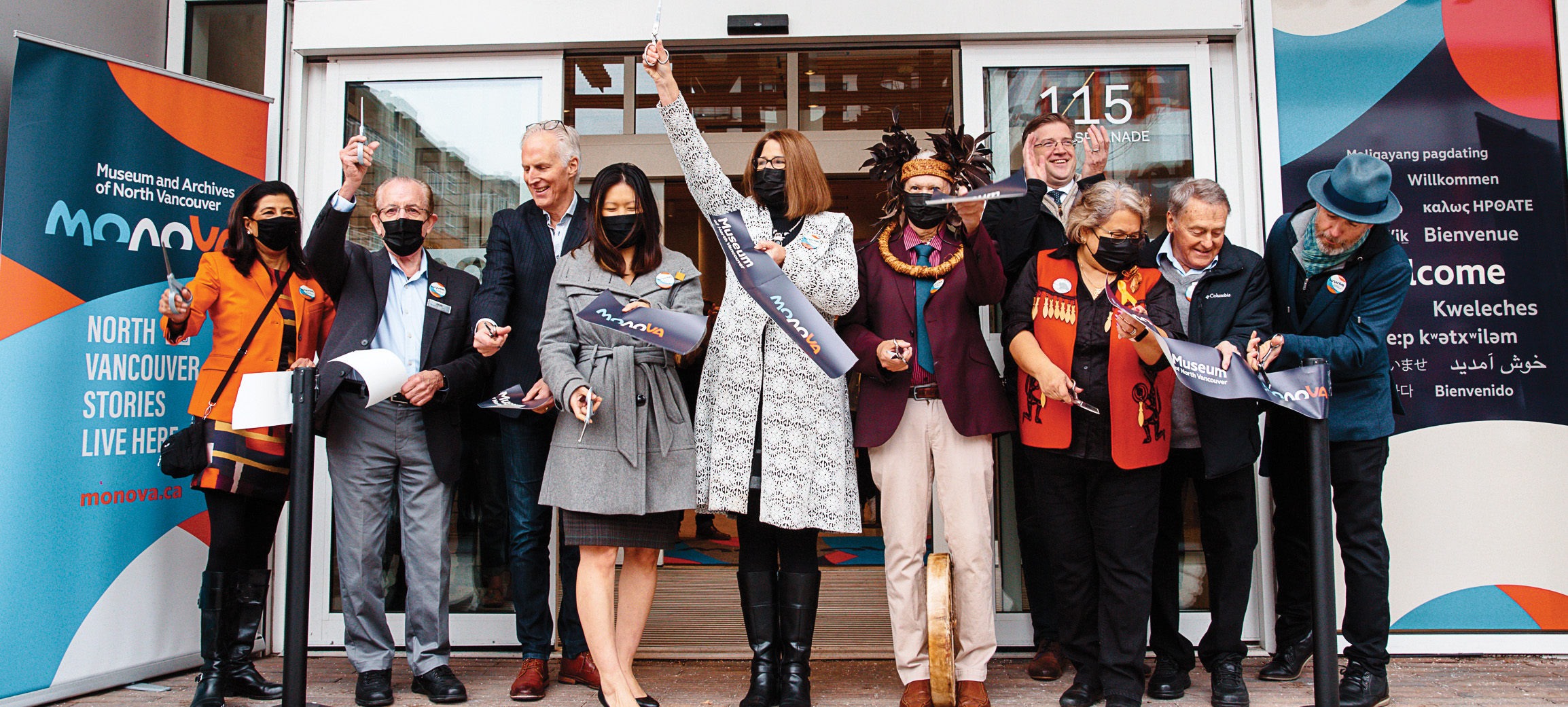
On December 4, 2021, MONOVA: Museum of North Vancouver officially opened in The Shipyards. Dee Dhaliwal, Councillor Don Bell, John Gilmour, MLA Bowinn Ma, Mayor Linda Buchanan, Latash Maurice Nahanee, Mayor Mike Little, Carleen Thomas, Bob McCormack and Greg Holmes were on hand for the official ribbon cutting. Photo — Alison Boulier
As well, founded in a love for North Vancouver but forged in a pandemic, dozens of programs have been developed and offered in flexible ways. Online, in-person and a mix in-between, an incredibly important part of MONOVA’s contribution to the community rests in its programming.
Museum, which was scheduled to open in 2020, was set back by the pandemic. Carol Ballard, Program Coordinator for the Museum of North Vancouver, says attempting to schedule programming during COVID-19 presented many challenges. With the rise and fall of COVID variants, the team was constantly challenged with re-evaluating their approach.
“So, we launched a virtual gallery tour for people who aren’t comfortable coming in, so they can access the museum from home,” says Ballard. “It includes an interactive component that uses song, stories and theatre with themes of belonging; what does it mean to belong and why do we seek it.”
The tour was also developed into a self-guided, in-person tour of the museum.
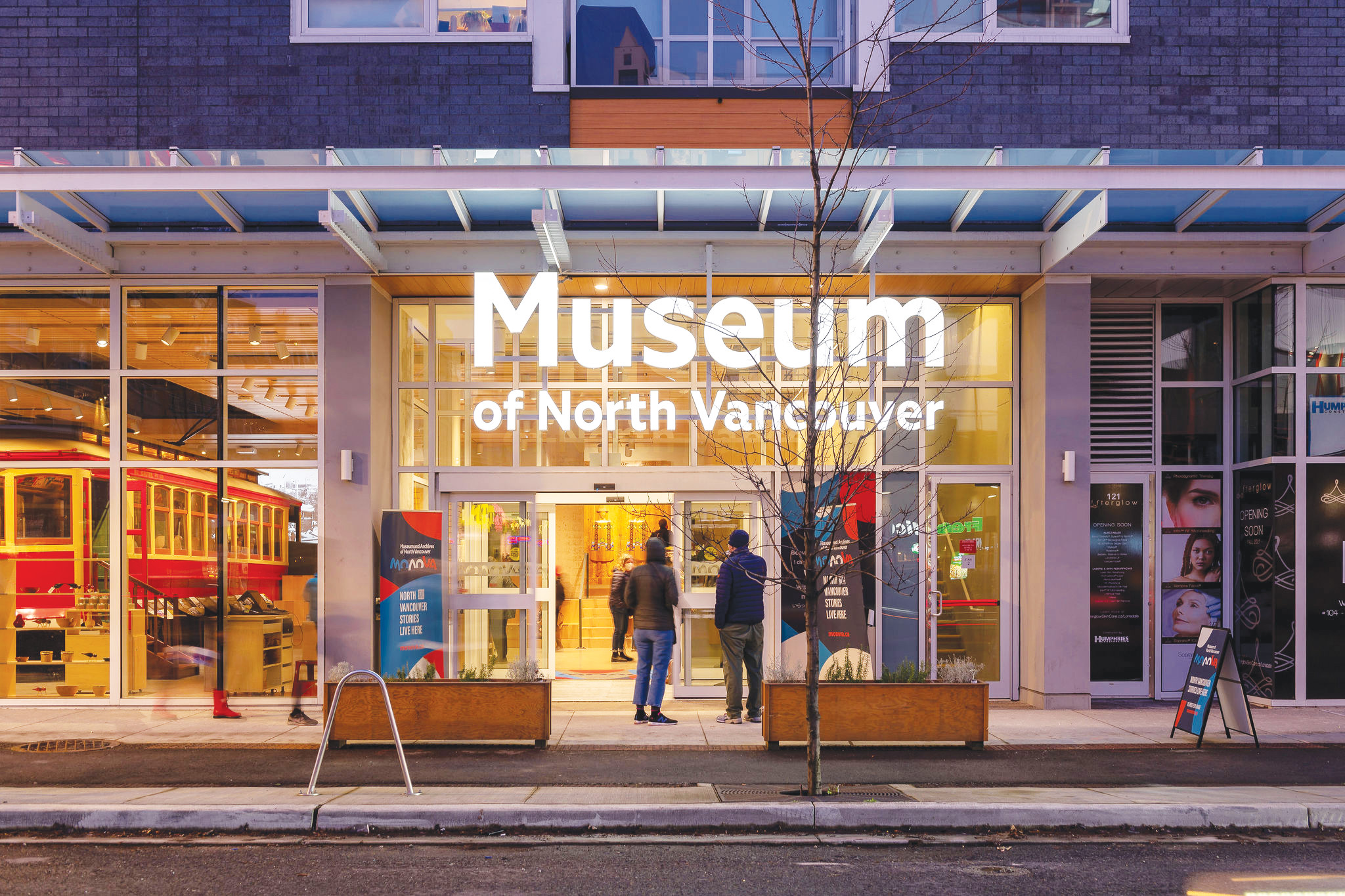
View of the exterior of the museum and of the Streetcar 153 in its lobby. Photo — Brett Hitchens / Brett Ryan Studios
Ballard adds, while MONOVA staff want to ensure programs for all, it’s making a concerted effort to reach a younger demographic.
To that end, MONOVA created programming both in-museum and online, which would appeal to these younger audiences, including a storytelling program for preschoolers called Campfire Capers, as well as in-person and virtual educational experiences for schools. Perhaps most innovatively, MONOVA formed a partnership with students from nearby Capilano University to program their newly launched TikTok channel.
Pamela Roberts, MONOVA’s Public Programs Planner, who spent the last three years developing its public programs strategy, agrees COVID-19 had a huge impact — and not just on the museum.
“While I was developing program ideas and plans, COVID hit and really changed the world for our visitors,” says Roberts. “COVID has been really difficult for many families, but particularly families who need extra support. Children with autism have faced challenges during COVID with routines interrupted, in-person support being removed, and many programs being cancelled.”
Roberts adds those challenges were further compounded by social distancing and mask mandates, which is why she felt it was so vital to create Sensory Friendly Mornings. This is an exclusive visiting time for families and individuals who benefit from less noise in the galleries, and quiet activities were developed with them in mind.
With a mandate of, “culture for all,” Roberts says another important program in development is “New Voices,” which will diversify MONOVA’s volunteer group by encouraging newcomers to get involved while also learning the history of North Vancouver.
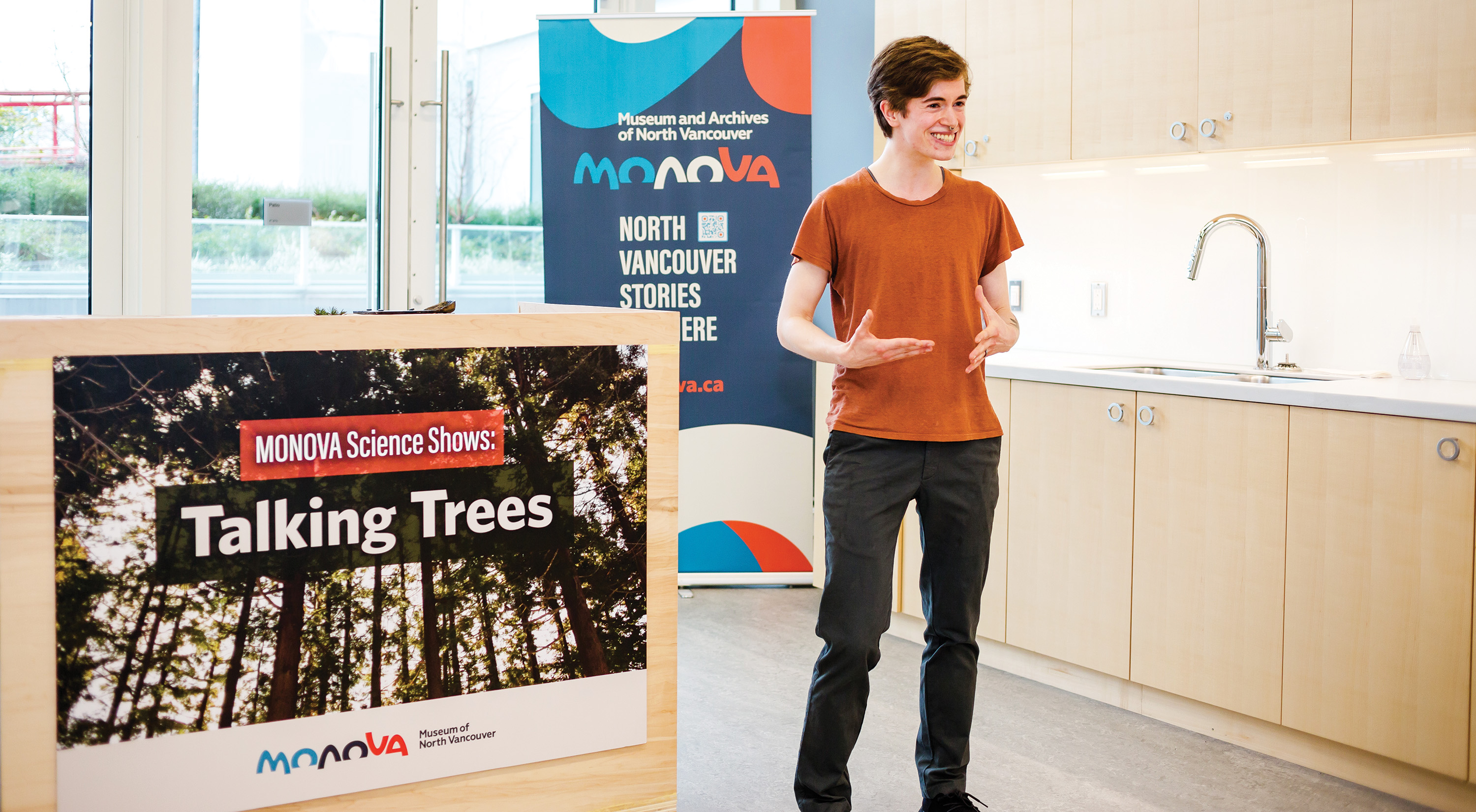
Charlie Cook facilitating Science Shows: Tree Talks program at MONOVA. Photo — Maxine Bulloch
“This program will benefit newcomers by providing important work experience in Canada and, perhaps more crucially, help them make a connection with their new home,” says Roberts. “For MONOVA, diversifying our volunteer group provides us with fresh perspectives and a wider range of spoken languages to improve our visitor’s experience.”
Roberts notes museum programming has changed in recent years to not only offer a historical perspective, but also an opportunity to reflect on current events. Roberts adds society today faces many challenges and museums should be trusted, safe spaces to discuss those.
“So public programs have a key role in creating space to discuss many of the contemporary issues that concern our visitors today — for example, climate change,” says Roberts. “And the benefit of also having the Archives of North Vancouver as part of the organisation is that historical evidence of the past is there, we can research it and connect past issues to the present through facts. The biggest change in museum programming is that we can no longer be neutral voices in contemporary society.”
In keeping with that mandate, Roberts helped ensure the museum has Indigenous content woven throughout its programming. Roberts adds that she has been personally inspired by the First Peoples Principles of Learning, foundational guidelines that teachers can use to help their students engage in authentic Indigenous learning experiences.
“It’s a different way of developing all programs and a respectful way of working with all our partners and colleagues,” says Roberts.
Sheryl Rivers, a member of the North Vancouver Museum and Archives Commission, helped create MONOVA’s Indigenous Voices Advisory Committee six years ago.
The committee was instrumental in transitioning MONOVA’s informal relationships with the Sḵwx̱wú7mesh (Squamish) and Səl̓ílwətaɬ (Tsleil-Waututh) Nations, into a more formal and structured partnership through the development and signing of a Memorandum of Understanding with each nation.
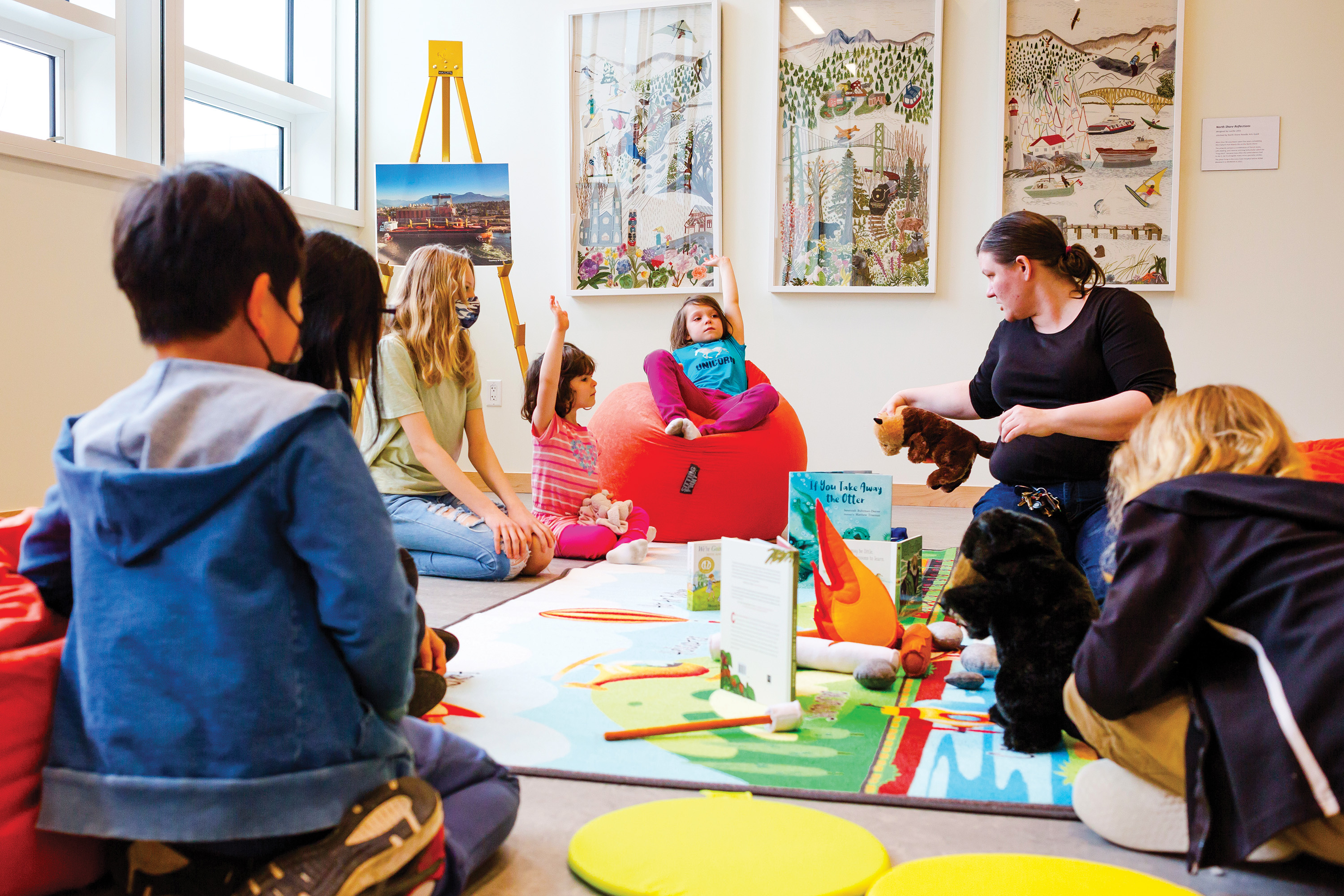
Program Coordinator Carol Ballard leading MONOVA: Museum of North Vancouver’s Campfire Capers program. Photo — Maxine Bulloch
Rivers says it was decided early on that a cultural advisor would be included in every step of the development of the new museum, including its programming. Tsawasiya Spukwus (Alice Guss) and Senaqwila Wyss are in charge of Indigenous programming for the museum.
“The idea we came up with was the Squamish and Tsleil-Waututh culture would be integrated throughout the new museum instead of siloed behind, ‘This is the Squamish Nation and this is how they lived here,’ or ‘This is the Tsleil-Waututh Nation and this is how they lived here,’ and, ‘This is North Vancouver and how they incorporated them,’” says Rivers. “Instead, everything is all woven throughout the museum.”
Rivers says those meaningful consultations between MONOVA and local First Nations helped create a model other museums should be looking to for guidance.
“I think it can educate other museums on how to integrate rather than segregate,” says Rivers. “I’d like to give a shout-out to the current staff, they’ve done an amazing job of bringing everything to life. This is important to me. I feel like I’m following my purpose so I’ll do whatever I can to support them.”
Laurel Lawry, Manager of Business Operations for MONOVA, says the team has worked very hard to ensure diverse voices are represented in all aspects of the museum, including programing.
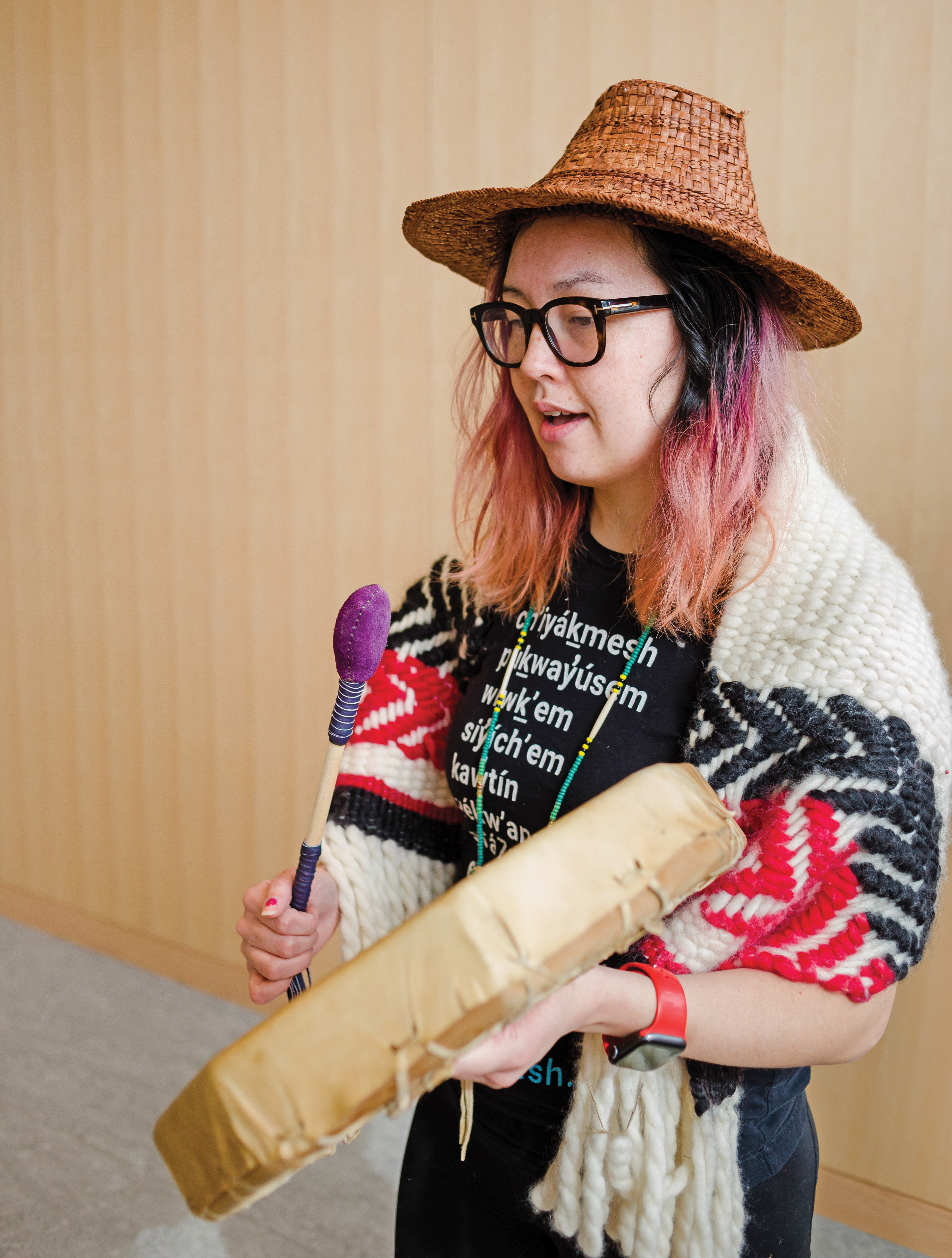
Indigenous Cultural Programmer Senaqwila Wyss. Photo — Maxine Bulloch
“What we’re trying to do with programming, is to be really relevant. We want to look at how the community will feel when they walk in, that this is their museum,” says Lawry. “We want them to have a sense of belonging and ownership, and to become a community hub where they can not just learn about themselves, but also discover other things about their community.”
She adds that MONOVA’s guest services team works hard to seek out opportunities for engagement, including conducting surveys as a way to gather input from the community. That information has been and, will continue to be, used to decide on the programming offered.
“It helps us decide what type of programs to run, when we run them and how we deliver them,” says Lawry. “We want the community to learn about the museum and interact with programs and exhibits in a really meaningful way. Programming is very much at the heart of everything that we’re doing and everything we want to achieve over the next year.” M
Sandra Thomas is an award-winning journalist and freelance writer and editor based in Vancouver, B.C.
